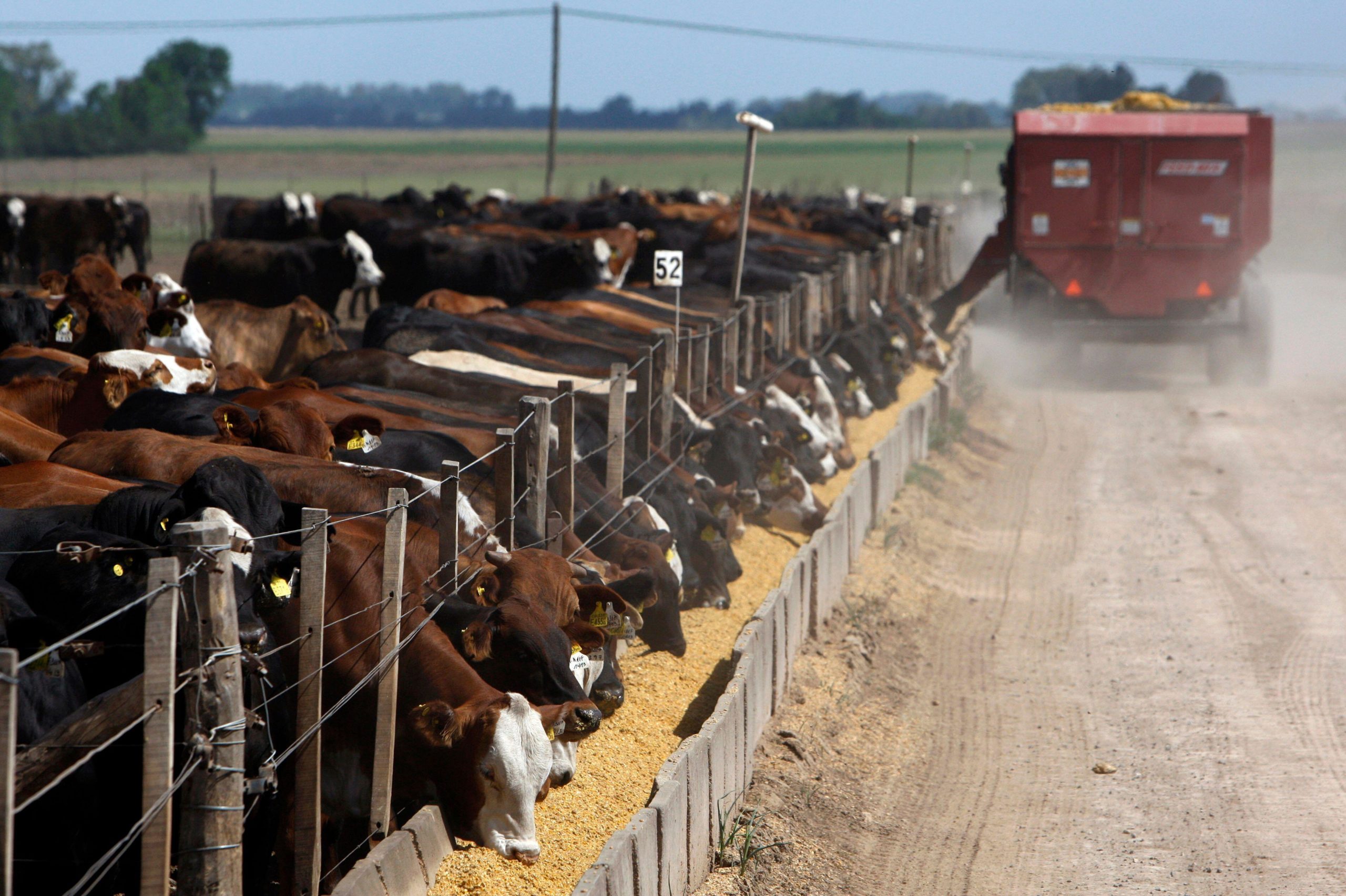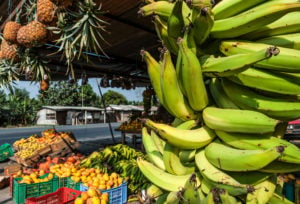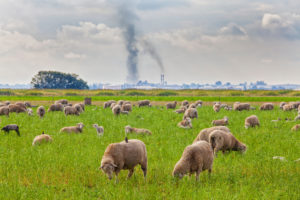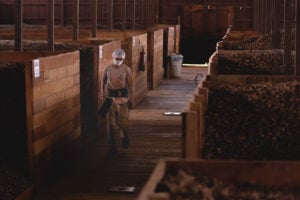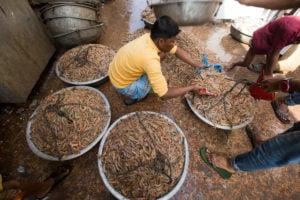In April 2021, Fox News issued a rare correction to its viewers after repeatedly reporting that President Biden’s climate change plans would force US consumers to cut their intake of red meat by 90%. The initial reporting sparked outrage among conservatives who claimed that Biden was coming for their burgers. But as Fox News later confirmed, none of this was in Biden’s plan.
The episode is indicative of two immense challenges. First, any mention of meat in the context of climate change can trigger strong reactions, making it hard to even discuss the topic. Second, the Biden administration’s plan – its nationally determined contribution (NDC) under the Paris Agreement on climate change – contains no reference to reducing either meat production or consumption. This absence is common to the NDCs of the European Union, China and all other G20 countries, and it is glaring.
Livestock production for meat and dairy causes 14.5% of all human-driven greenhouse gas emissions, with cattle responsible for 65% of those. But in policies for addressing climate change, meat has flown under the radar when compared to other sectors with high emissions, such as transport and energy.
Livestock emissions on the agenda
Policy debates about meat and climate change are messy, deeply political and heavily influenced by powerful vested interests. COP26, the ongoing UN Climate Change Conference, won’t solve these challenges, but there are hopes it can at least change the conversation and set a new course.
Meat and dairy production are significant contributors to climate change because of the vast areas of land needed to raise cattle and grow the foods they eat, as well as from the powerful greenhouse gas methane, which a billion cows burp out each day.
As public awareness rises and alternatives to meat grow in popularity, the livestock sector is facing unprecedented pressure. In response, the meat lobby has been pushing for more intensive livestock farming using improved breeds, different feeds and on-farm technologies, among other proposals, to reduce emissions from the sector. The industry’s stance is undermined, however, by accusations of tobacco-style PR campaigns, demonstrably false claims and foot-dragging when it comes to cutting methane emissions.
Tara Garnett, director of Table, a food systems study initiative at the University of Oxford’s Environmental Change Institute, points out that more intensification would lower costs and stimulate more demand, potentially increasing overall emissions from the sector, even if emissions per kilo of meat fall. On the other hand, she says, maintaining current levels of consumption by switching to extensive instead of intensive livestock farming would be “catastrophic”.
“However you look at it, we’re going to have to cut down on animal production,” says Garnett. “So the question is, if we’re going to cut down, what are the systems we might want to retain because of their value over and above their environmental impacts? And this is where you look at, say, pastoralism in sub-Saharan Africa, which doesn’t feed a lot of people but it does feed the people who need it in quite an important way.”
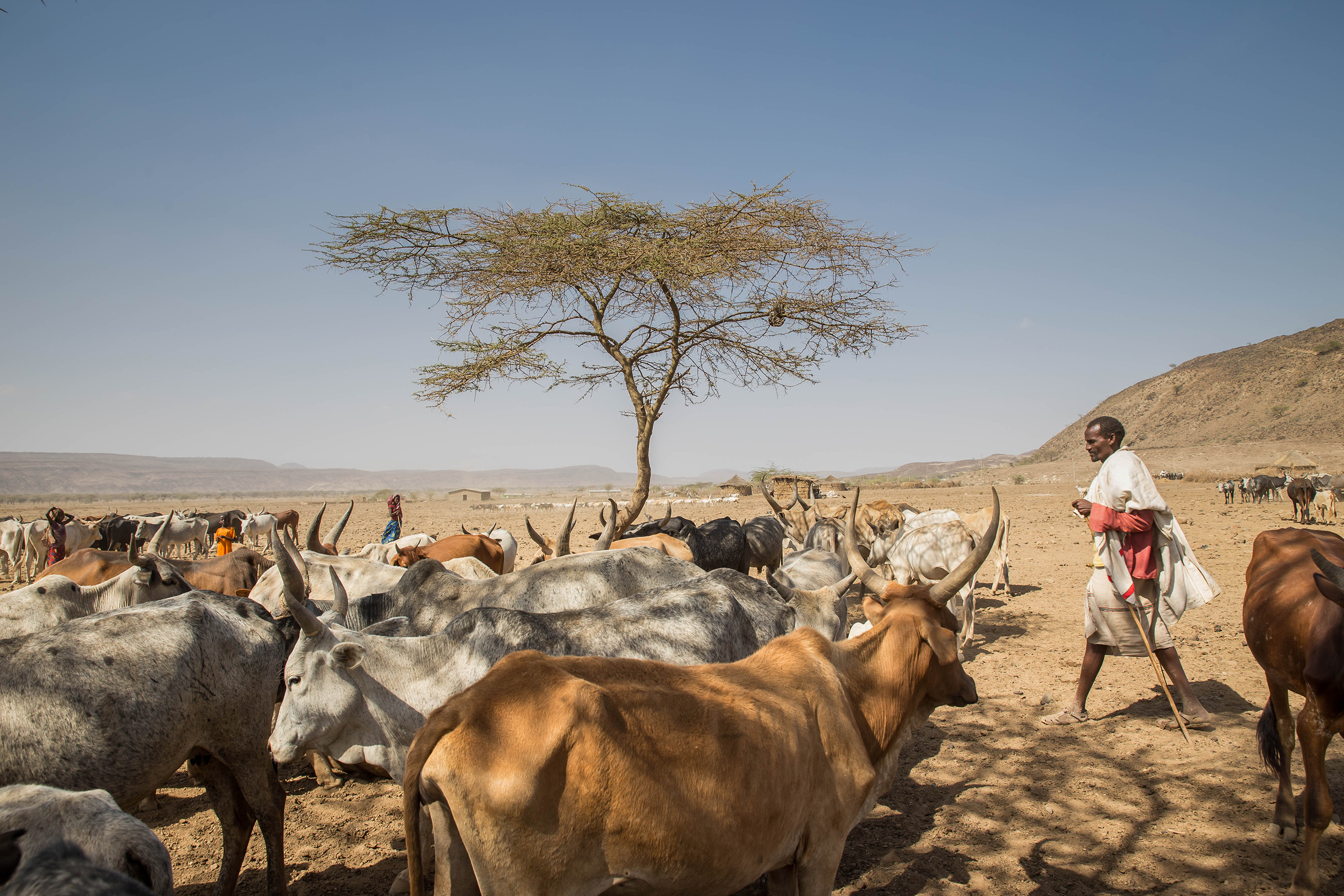
Some countries are starting to act. Ethiopia has pledged to reduce emissions in part by replacing some of its non-dairy cattle with chickens, sheep and goats – whose production would have a lower impact on the climate – so long as the nation receives international financial support.
Meanwhile, Denmark legislated this October that emissions in the agriculture sector must fall by between 50% and 65% below 1990 levels by 2030, including by converting some farmland into areas for wildlife and boosting production of plant protein. How the target will be shared among different subsectors, such as meat and dairy, will depend on political negotiations that will also decide how to distribute US$600 million set aside to compensate farmers during the transition.
But, elsewhere, commitments to reduce livestock production are rare. China’s NDC under the Paris Agreement refers to reducing emissions from livestock and poultry breeding by improving productivity and refining ways to treat and use manure. The NDCs of the EU and other G20 members are largely silent on how these countries will reduce emissions from the sector, as well as saying nothing about reducing meat consumption.
One potentially promising high-level development has emerged from the first week of COP26. The launch of the Global Methane Pledge, led by the US and EU, and signed by a further 103 countries, commits signatories to a collective reduction in global methane emissions of at least 30% by 2030, compared to 2020 levels. The pledge calls for a “particular focus on high emission sources” and could have implications for meat and dairy production if it prompts the adoption of improved agricultural practices.
Getting the message right
The lack of national targets on livestock emissions is preventing private investment in low-carbon agriculture, says Jeremy Coller, chief investment officer of Coller Capital who, in a recent article, called cows “the new coal” – a soon-to-be-stranded asset. But Brent Loken, global food lead scientist at WWF Global Science, urges a more nuanced framing.
“We’re not saying ‘get rid of all livestock,’” Loken says. “We don’t want to paint livestock as being bad. In some grazing systems, the role of livestock is very important. In some parts of the world, livestock is an extremely important asset for families, and in no way do we want to tell them that this is some kind of stranded asset for them. But what I would say is that any further investment in growth of livestock will probably be a stranded asset.”
Loken says changing consumption habits must go hand-in-hand with reducing emissions from the livestock sector. But he points out that two key mechanisms under the Paris Agreement – the NDCs and the Koronivia Joint Work Programme on Agriculture – do not consider consumption-based emissions. These are the emissions caused by what a country consumes, as opposed to by what it produces. They amount to a country’s carbon footprint, and there is no requirement for countries to report them.
“One of the things that we’re talking about a lot at COP26 is the critical importance to include consumption-based emissions in these processes,” Loken says. “We really need to start socialising this idea and bringing negotiators and policymakers along, really helping them to understand why it is critically important to take a food systems approach when they’re looking at the NDCs.”
Loken says it is too late to expect any specific breakthroughs on meat at COP26, as most countries have already submitted their NDCs. Under the Paris Agreement, the next deadline for revising these national pledges is not until 2025, though a COP26 decision could urge parties to update their NDCs sooner than that. In the meantime, countries have other pathways to follow. Under the UN Food Systems Summit process, most countries are developing strategies for sustainable food systems, and will convene in 2023 to assess progress and set ambitions. These are opportunities to address both production and consumption.
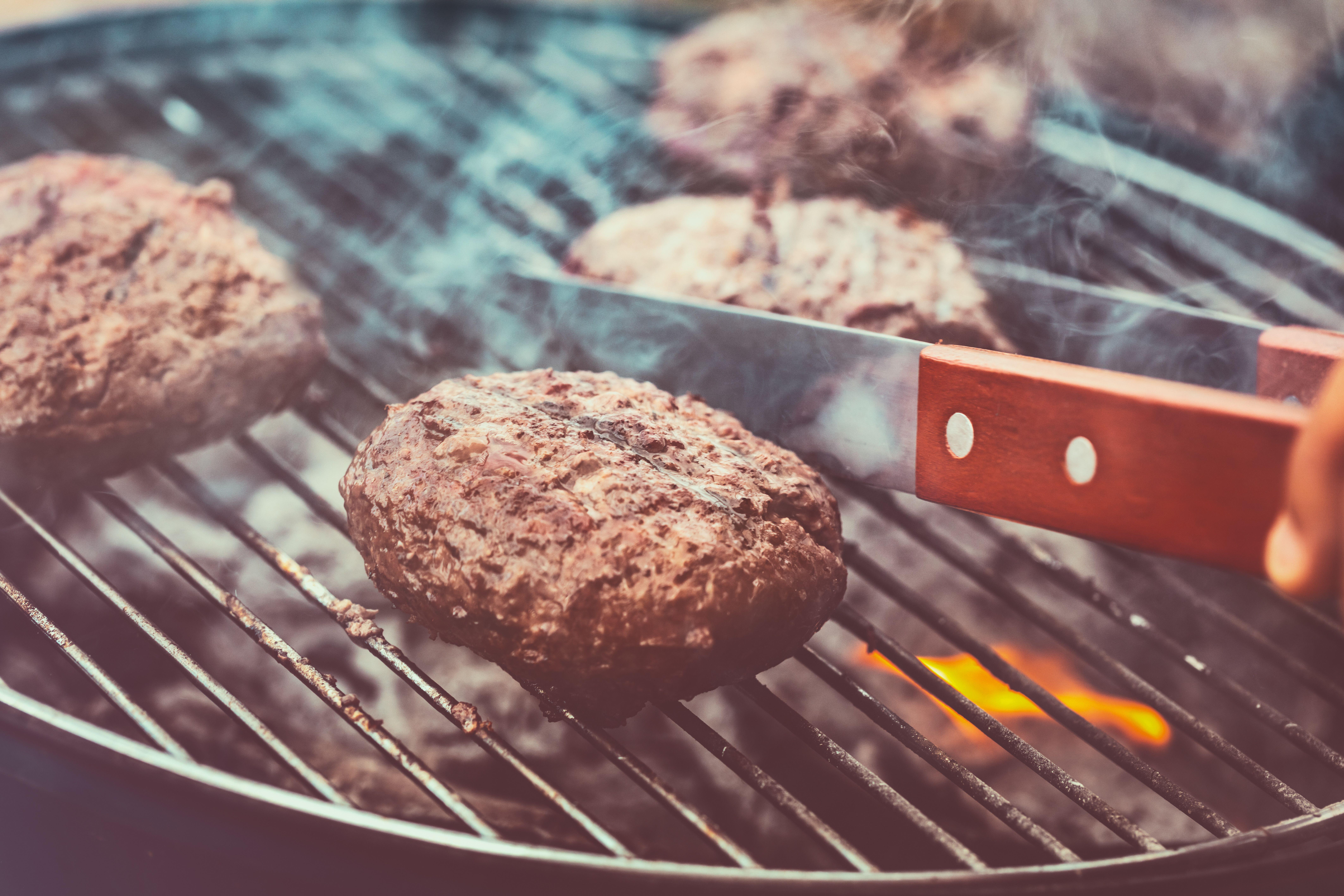
The EU’s Farm to Fork Strategy, for example, outlines planned support for the most sustainable, carbon-efficient methods of livestock production, while promoting sustainable consumption and facilitating dietary shifts. Its measures include product labelling to inform consumer choice, supporting research into plant and non-plant alternatives to meat, and developing policies for sustainable food procurement in schools and public institutions. In October, the EU Parliament adopted a resolution welcoming the strategy, and a regulatory framework is due in 2023.
Shifting consumption
With time running out on 1.5C, there is growing frustration at the way the meat and dairy sector has been left out of climate change deliberations. One group pushing for change is the 50×40 network, a broad coalition whose 52 members include the World Resources Institute, Greenpeace and Rainforest Alliance.
The network aims to reduce production and consumption of meat and other animal products by 50% by 2040, and ensure that all remaining production is environmentally and socially sustainable. It is urging countries taking part in COP26 to recognise the need to cut production and consumption of industrialised livestock, and ensure a just transition for those involved in the sector. They can expect resistance from the livestock industry to any major change.
“While the greenhouse gas impact of producing beef is high compared to other foods, raising cattle has many environmental benefits and plays a key part of the circular economy within agriculture,” says Fawn Jackson, director of policy and international relations at the Canadian Cattlemen’s Association, which represents 55,000 farms with more than 12.2 million cattle. “A reduction in beef consumption with the purpose of reducing greenhouse gases could have significant unintended negative environmental impacts, including further loss of native grasslands and stored soil carbon due to farming.”
Greenhouse gas emissions from Canadian beef are, Jackson says, less than half the global average. But elsewhere, the expansion of cattle production has resulted in widespread deforestation, including to grow the animals’ food. Beyond the climate impacts, intensive animal farming is responsible for significant air and water pollution, and degradation of land and soils.
Amid industry opposition to reducing meat consumption, there are growing calls for meat taxes. Few politicians are prepared to interfere with consumer choice or tell voters that the price of meat must rise. Yet according to recent surveys in France, Germany and the Netherlands, most consumers would support a meat tax if the revenues were used to reduce the cost of vegetables and fruit.
“I think one of the only ways to influence consumer choice is not through education campaigns – it is really through something like a tax,” says Loken. “How we get there, I don’t know. But at least it’s being talked about and that’s a positive sign.
“My fear is that it is not being talked about quickly enough in order to be able to reduce emissions. If we had another 50 years to play with and bring public support along with us, I’d be a bit more optimistic. But we don’t. The next decade is the most important decade for us to be able to tackle these problems.”
